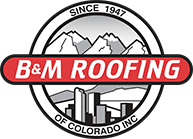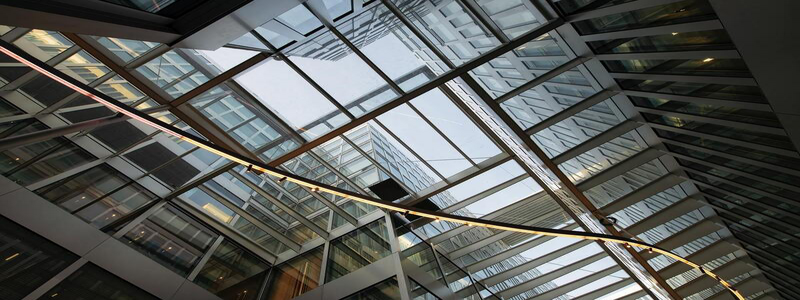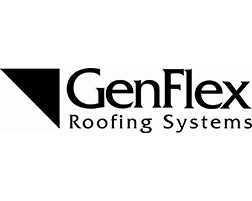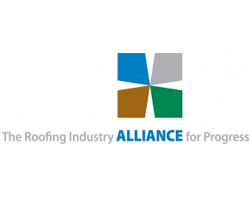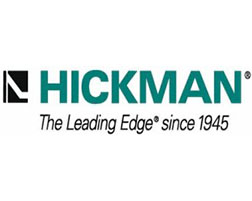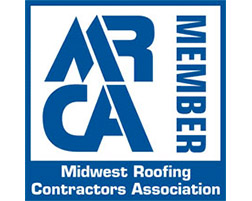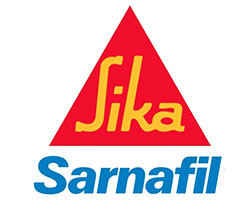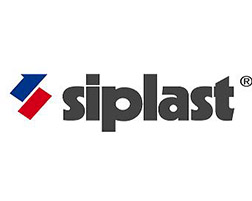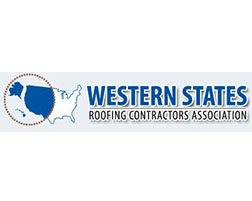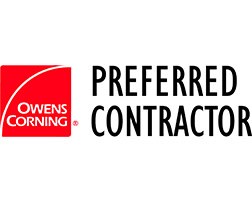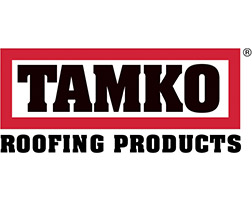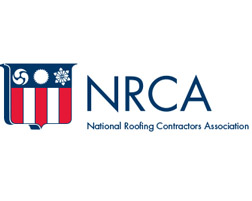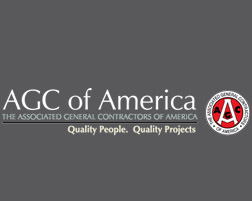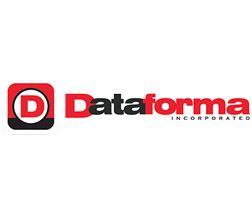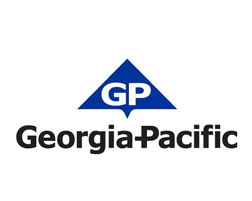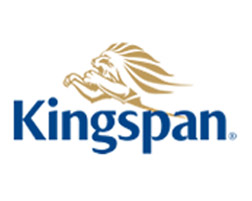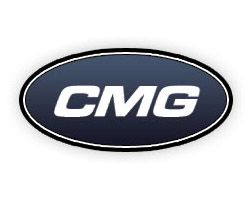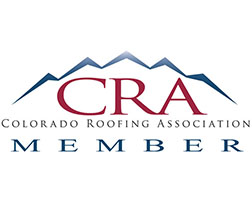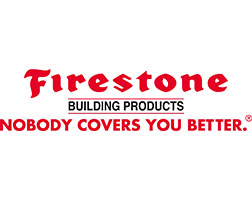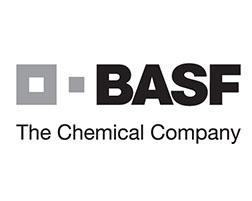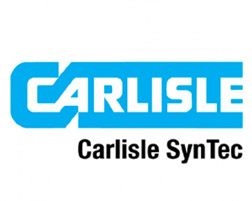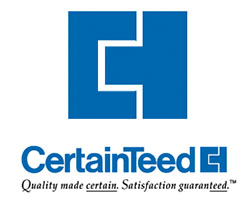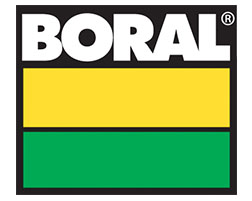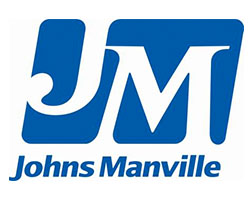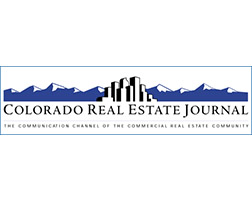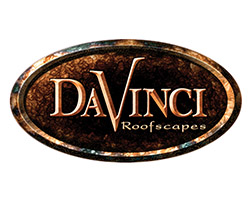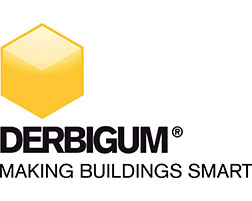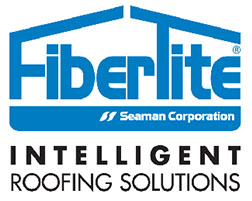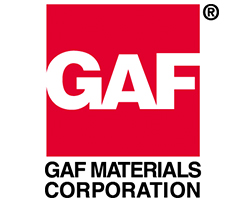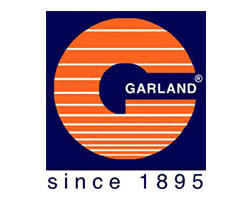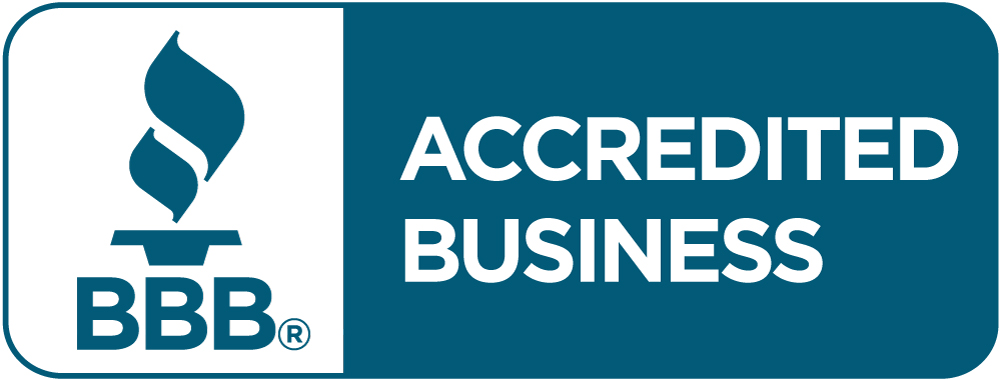Commercial Roof Types
A roof may seem like just a roof, but in essence, a roof is so much more. It not only protects you from the weather but also enhances the look of your home. You can include roofing as part of your decor to achieve a look that really stands out, especially now that you can get different colored roofs.
Roofs can be classified as either residential or commercial. They of course do the same thing, but a commercial roof is much larger than a residential roof and it is primarily used for commercial purposes. It can either have a lower slope, or it can be entirely flat.
Which Are The Most Common Types of Commercial Roofs?
The typical commercial roof types designs will require you to consider factors such as the weight of equipment that’s housed on the roof and the need to cover a much larger area. Residential roofs do not have much design worry and they are typically easy to maintain, replace and repair.
Durability, Cost, and Energy Efficiency of Commercial Roofs
This is actually the trifecta of having a commercial roof. It should be durable, cost-efficient as well as energy-efficient.
When properly installed, a commercial roof has a lifespan of over 50 years, although this depends on sub-roof and climate conditions, which could either increase or decrease the estimates.
For years now, people have been extremely concerned about the efficiency of commercial roofs, and they have been adding more and more parameters to make them energy efficient. For a business owner, energy efficiency is of utmost importance as this means that the roof would save them some money in the long run.
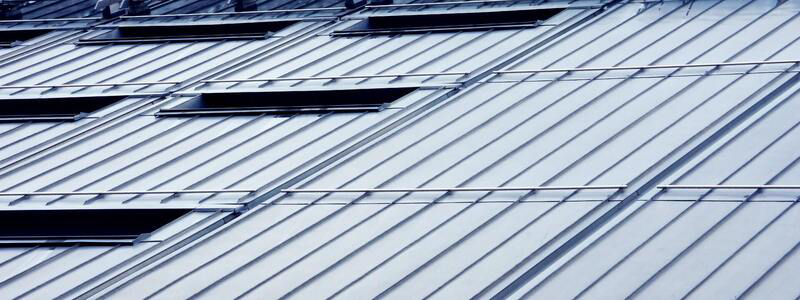
The cost of installing a new commercial roof will certainly be at the back of your mind. They can be expensive, but of course, this will depend on the type of roof you choose. Some of them will be extremely costly to install, but easier to maintain, while others are likely to be cheaper to install but more expensive to maintain.
Here’s a look at the different commercial roof types:
Metal Roofs
Metal roofs are a popular option for commercial roofs and this is usually due to their high lifespan of between 40 and 60 years. There are many different types of metallic roofing systems available and some will even come with an integrated solar or snow system that’s removable.
The most common types of metal roofing materials are:
- Aluminum, tin, and zinc
- Copper
- Corrugated galvanized steel
- Coated or stainless steel
- Tile sheets
Metal roofs usually have an attractive and finished look with a strong fire-resistance rating. They are also more sustainable and stronger than other roofing options.
The only downside to metal roofs is that they are susceptible to corrosion, and because of this, they should have a protective surface layer added in order to manage the damage from moisture, exposure, and other environmental factors.
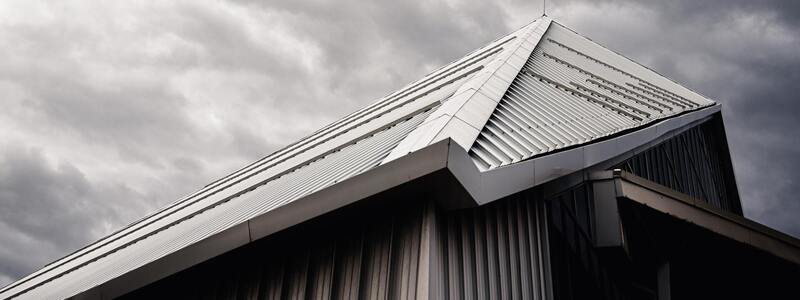
Built-up Roofing Membrane
A built-up roofing membrane has a life span of more than 20 years and it’s made of alternative gravel and tar layers. The total number of layers affects its cost and durability. The roof is inexpensive and very easy to manage and it is actually one of the most flexible and oldest roofs available.
It holds up well with foot traffic, but it all depends on the stability of the understructure that has been installed to carry movement and vibrations. It is also UV resistant and can be coated in order to reflect the heat.
The main downside to the built-up roofing membrane is that it has the shortest lifespan compared to other types of roofs and it is also difficult to identify a leak if there’s ever one on it.
Green Roof
Nowadays, green roofs have become extremely popular as they can last a long time, between 30 and 50 years. They mostly consist of a tough waterproof membrane that’s normally covered by green plants.
These are sustainable masterpieces that help improve the air quality and can often add a green relaxation space for people to enjoy.
The main advantage of a green roof is that it is environmentally friendly and can really improve the aesthetics of the building. It often comes with sophisticated drainage and water management system, with sensor capabilities.
The main downside is that it requires regular, ongoing monitoring and maintenance of the plants.
Thermoset EPDM Membrane Roof
EPDM stands for Ethylene Propylene Diene Terpolymer, which refers to a roll-based and durable synthetic rubber roof membrane that’s also known as Thermostat roofing. The EPDM offers strong resistance to pollution and sunlight, and it is versatile, easy to install, and long-lasting.
EPDM roofs come in either black or white rolls and in addition to their resistance to the sun and pollution they are also able to withstand most solvents such as acids and alcohol.
The downside to EPDM however is that they are not the prettiest of roofs and they can easily puncture – this is when debris falls on the roof or when people walk on them.
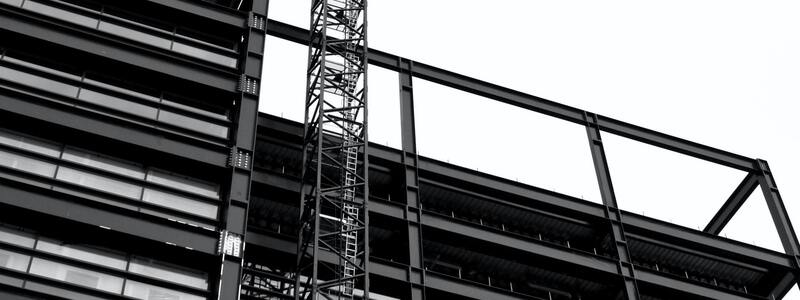
TPO and Thermoplastic PVC Roof Membranes
TPO or Thermoplastic Polyolefin and PVC or Poly Vinyl Chloride roofs are materials used in roofing that are extremely resistant to adverse conditions. These conditions include chemicals such as oils and fats, UV lights, and bacterial growth.
These can easily damage the roof membranes. They are also heat-reflective, lightweight and puncture resistant.
Other benefits of PVC and TPO roofs are that they have strong air-welded seams, tolerant to high winds and high temperatures and they are also fire-resistant.
The main downside is that; due to their immense popularity, there are several fake TPO products on sale that are made of poor and cheap materials. Many smaller manufacturers are trying to create their own product lines that make it easy for consumers to get dupped.
What Is The Difference Between TPO and EPDM?
The main difference between TPO and EPDM is that TPO reflects the sun and allows the commercial air conditioners to work efficiently, while EPDM comes with a dark surface that absorbs heat in summer conditions and forces the cooling system to work harder.
Shingles
This is a common material used with residential roofs. Shingles can however still be used in commercial roof types but only those that have steep roofing lines.
There are many different types of shingles used in roofing, such as architectural, asphalt, plastic, ceramic, and slate. They are affordable, easy to install, and extremely versatile.
The downside to shingles is that depending on the type you use, the lifespan usually isn’t that long compared to other roof types and shingles tend to be more susceptible to moss and mildew if you happen to have your building near a shaded area.
The B&M Roofing Company
At the B&M roofing company, we offer solutions for both commercials as well as residential roofing in Colorado. We have many years of experience in this field and our customers trust us explicitly.
We offer specialty products that can help with your home or business across the state and all nearby areas. You can take advantage of our RoofSave option today, which offers a comprehensive management program with a cost-effective approach to roofing in Colorado.
Commercial Roof Leaks
No one wants to find water leaking through their roof. Sometimes harsh weather or not taking proper care of your roof can cause it to leak. If you do notice that your roof is leaking, then you need to identify the problem and solve the problem as quickly as possible.
There are many causes that can cause commercial roof leaks. Alongside this, you should look for when you may have a leaking roof. In this article, we will discuss everything relating to commercial roof leaks, so that you are better prepared in case it happens to you.
Common Types of Roof Leaks
If you’re wondering how much a commercial roof leaks repair cost, it will depend on the type of damage your commercial roof has been exposed to. So here, we will list the most common types of roof leaks.
Poor Maintenance
You want to make sure that you are maintaining your roof on a regular basis. This includes checking the flashing around the perimeter of the building and making sure that all vents and downspouts are clear of debris. Make sure that the gutters are clean and free from clogs. Check the roof for damage and cracks. All of these things can help prevent a roof leak.
Weather Damage
There are times when the weather conditions can cause a roof leak. Hail storms can cause severe damage to roofs. When this occurs, you want to make sure that the roofer has taken the necessary precautions to protect the roof during such incidents. They should have put up tarps or other protective measures to keep the roof dry.
Damaged Membrane
On commercial roofs, there is a membrane that acts as a waterproof layer on the roof. When this is damaged due to multiple reasons like weather or age. Then, once it is damaged, water can start to leak through the member and into the insulation and into the building.
Overly Exposed Roof
If you feel that your roof is too exposed to the elements, then you should consider having it covered with some type of protection. This can include tarps, plastic sheeting, or even metal panels.
Roof flashings may also be installed onto your roof to areas like the roof edges or chimney. However, if this isn’t installed properly, or the roof flashing is old it can become damaged easily, which can then cause a leak.
Roof Collapse
If you ever notice that your roof appears to be collapsing, then you should contact a roofer immediately. An improperly built roof can collapse under heavy rain, causing significant damage. If the roof is beginning to collapse, then leaks will start to form.
Blocked Drainage
When a commercial roof is installed, then the contractor will take into account where the water from rainfall will drain to. This can be through gutters, drains, scuppers, and downspouts. However, these need to be cleaned often to make sure water is removed from your roof.
If the water isn’t draining properly, then you will produce ponding or standing water on your roof. This standing water will increase the chances of the water leaking through the roof membrane and adding more weight to the building’s structure, causing leaks.
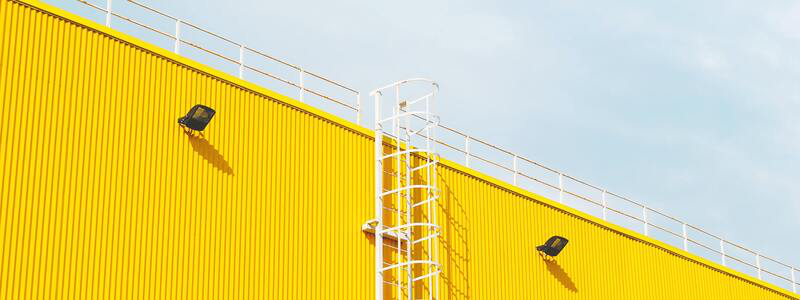
Signs That Your Roof Is Leaking
It is important that you look for signs that your roof may be leaking. These signs are quite obvious and very difficult to miss. The main signs are the following:
- Water Inside – A very noticeable sign is that you will find water in your home. This is a clear sign that your roof or something is leaking in your building. You may notice either a puddle on the floor or water dripping above your head.
- Stained Walls – When ceiling systems or tiles are exposed to water for a long period of time, this will discolor the walls and ceiling.
- Mold And Odor – Mold loves moist environments and grows well there. If water is leaking into your building, then there is an increasing chance that mold is growing and spreading in the building. You can easily smell the mold as it has a foul smell.
Where Is The Leak Coming From?
It can be difficult to pinpoint where the leak is coming from sometimes. However, once you do know where your leak is coming from, then it is much easier to find a solution to the leak.
There are a couple of ways to identify where the leak is coming from. You can enter either the underside of the roof or the attic of your building. Often You will see the origins of the leak from a joint between two pieces of plywood. However, the leak isn’t always visible.
In the case where the leak is not immediately visible, then you do have another option. As long as you are safe, go onto your roof and have a look around. If you still can’t see what may be the cause, then take your garden hose and add a controlled amount of water onto the roof. Run the hose over areas where you think the leak may be. Then, by having someone inside in the attic look where the water is coming from.
It is important, that once you have found the leak, you fix it as soon as you can.
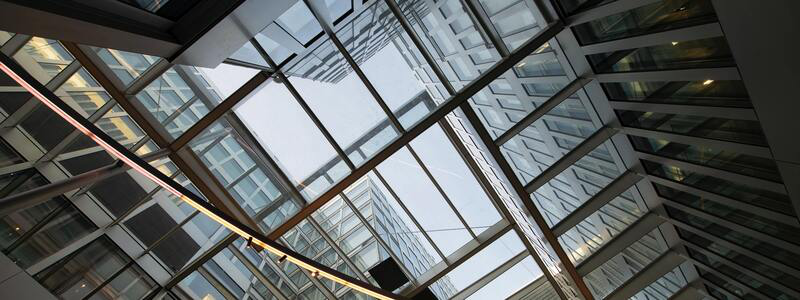
How to Fix a Leaking Roof?
The first thing to do when fixing a small commercial flat roof leak is to stop the leak. Once you have stopped the leak, then you can begin to repair a roof. You can use many methods when you wonder how to fix a leaking roof. Some of them include, but are not limited to, the following:
Patch It With Tear-Away Tape
This method involves using tear-away tape. This is a type of tape that comes with a sticky side and a non-sticky side. The tape is to be used to cover the hole in the roof membrane. The tape would stick to the roof membrane and also to the roof shingle. Once the tape is stuck to both sides of the hole, then you could apply some caulking to make sure that the tape stays stuck to the roof membrane.
Use Caulk
This method involves applying caulk to the roof membrane. This would help to seal up any holes that may be in the roof membrane. After you have applied the caulk, then you should wait until it dries before moving on to the next step.
Replace The Membrane
If you want to replace the whole roof membrane then you need to get a new one. You can buy a new roof membrane at most roofing stores. However, if you just want to patch up the leak then you don’t need to get a new roof membrane. Instead, you can cut out the area where the leak is coming through and then put some tar paper over it. Once this is done then you can apply some asphaltic based roofing cement to the area. This will help to seal up the leak and prevent it from recurring.
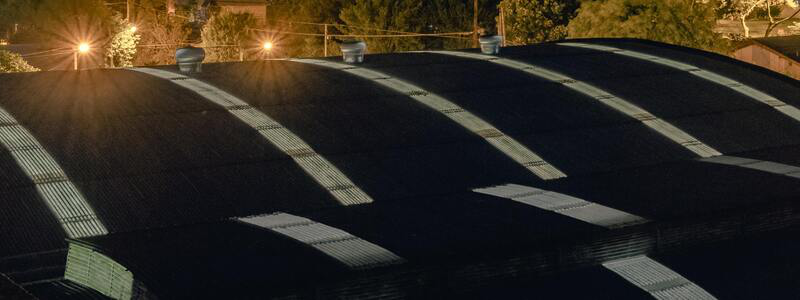
What Should You Do When You Want To Stop A Commercial Roof Leak?
To stop commercial roof leaks, you need to take several steps. First off, you need to identify the source of the leak. Once you know where the leak is coming from, then you can start to find a solution for the leak.
As you can see above, there are simple ways to fix a small leak. However, if the leak is quite large, or you don’t feel comfortable fixing it yourself, or you can’t find the leak at all. Then we recommend calling B&M Roofing, as we offer you emergency roof service requests. Fixing your roof leaks as quickly as you can is very important.
B&M Roofing Colorado: Commercial Roof Leaks
Call us today at 303.938.9642 to schedule a visit from our emergency repair team or visit our leak repair request page to submit your information and have one of our team members contact you.
Our 24/7 support line is here to help immediately with emergency roof repair. Calling sooner means less of a wait and more opportunities to repair before extensive damage is done. We offer work throughout Colorado, including:
- Denver
- Colorado Springs
- Fort Collins
- Boulder
- Greeley
- Rocky Mountain areas
- Surrounding states including Wyoming, Utah, Kansas, Nebraska
What Does Freeze Thaw Mean?
In our beloved state of Colorado is known to experience turbulent weather conditions. From facing heavy snow, ice, and low temperatures, it’s no surprise that the weather changes can cause havoc in areas of our lives.
The effects of such weather conditions can subsequently lead to freeze thawing. When we consider the science behind freeze thawing, we begin to see that it is a process that can potentially be destructive to just about anything. In this case, roofs.
But what does freeze thaw mean? This post will give you insight into what freeze thawing is and how you can prevent it from damaging your home and roof.
There are certain things you can do to winterize your roof, but knowing more about what freeze thaw means and what that means for your roof will give you an understanding of how to best prepare.
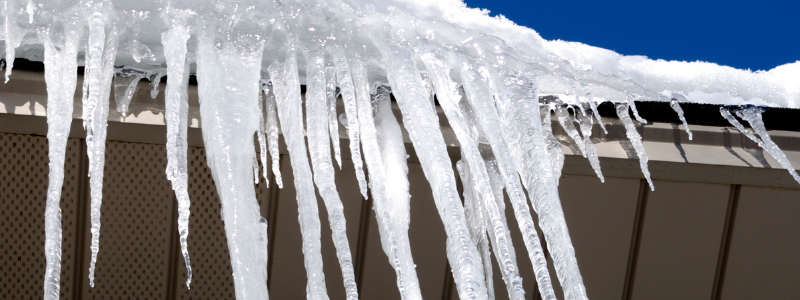
Freeze Thaw Weathering
Freeze thawing is characterized as a process of erosion that occurs when water enters cracks and crevices and expands as a result of low temperatures, this results in a build-up of pressure which is then released when temperatures increase.
The air consists of water and moisture.
A reduction in temperature causes water molecules to expand. Hence, when we consider the accumulation of rain, ice, and snow on roofs, we begin to see the signs of water expansion through roofing damage. The expansion of the water molecules causes a build-up of pressure. Roofing materials are not designed to be flexible and malleable, hence when water seeps beneath these materials and expands, it consequently causes damage such as cracks. A fluctuation in weather conditions with temperatures reaching freezing levels can have catastrophic effects as the freeze thaw cycle begins to add substantial stress on the roof’s shingles as it expands and contracts along with the weather.
The effects of the freeze thaw cycle on roofing can result in:
- Seam damage
- Ice dam damage to guttering
- Condensation and mildew within the home
- Flashing leaks

Freeze Thaw Damage
The roof of a building is designed to be a barrier that essentially protects the building from the elements. Hence, maintaining your roof is critical to ensuring that it performs in the way it is supposed to.
However, drastic weather conditions and unexpected turbulent storms can be the demise of a well-constructed roof. Despite having a sturdy roof, significant exposure to hard weather, ice, and water can cause severe roof damage with potentially long-lasting effects.
The residue water left from freeze thawing can be highly damaging as it results in water seeping under roof shingles and entering attic space. If this is not dealt with efficiently, it can lead to additional problems such as causing damp and leaks through ceilings, walls, and insulation. The presence of continuous stress applied to roofing can also result in a significant reduction in the roof’s lifespan as the cycle of contracting and expanding may bring it to a breaking point.
In addition to these damages, if your roof is made from natural material such as stone or concrete, the process of freeze thawing causes the materials to erode as a result of excessive water exposure. Consequently, this effect can become a catalyst for further damages such as water entering the home causing mold and mildew as a result of bacteria-ridden water molecules thriving in a warm environment.
How to Prevent Freeze Thaw Damage
Are you wondering if an ice and water shield is necessary?
The answer is we recommend it.
It’s critical that even if you’re not in a position where you want to completely replace your roof, you at least put the relevant precautions in place to ensure that your roof does its job effectively as it provides an additional layer of protection from weather damage. These types of shields are great for not only offering significant protection but also providing peace of mind in knowing that you don’t have to worry about the change in seasons.
An ice and water shield is a protective waterproof membrane that works to protect the roof from damage from ice dams, snow, and rainwater. It works to provide a form of protection that makes the building weather-resistant. Learn more about the benefits of an ice and water shield.
Besides implementing additional roofing protection, there are additional steps you can take to avoid winter roof problems. One of the most significant steps to take is to analyze your roof early on to ensure that any existing problems can be dealt with in advance before winter sets in. Find out more on winterizing your roof effectively.
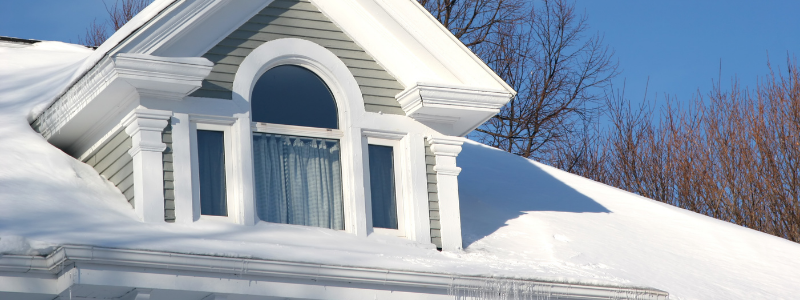
How B&M Roofing Can Help With Freeze Thaw
If you’ve started to notice any of the signs of the effects of freeze thawing, it’s not too late to get your roof back into shape.
The best thing you can do is to ensure that your roof is regularly maintained and to hire a professional to put the necessary weather protection in place. At B&M Roofing, we pride ourselves on providing leading roofing solutions and services. We offer services that ensure maximum protection for both commercial and residential roofing. Our top services for weather protection from freeze-thawing include water and ice barrier installation and roof repairs and maintenance. Our services exist to give you maximum protection and peace of mind. We consist of a reliable team of roofing experts who are exceptionally skilled in a variety of roof types.
If you’re concerned about the current state of your roof as a result of weathering and snow and you’re considering a roof replacement, find out more about what type of roof is best for snow.
Between wear and tear, natural degradation, and weathering, our roofs are built to withstand extreme pressure. However, there is only so much that can be taken. In order to protect our buildings, it’s essential that we work to maintain the quality of roofs to maintain their lifespan. Doing this requires taking the necessary steps to ensure that the correct repairs are done and that the necessary precautions or protective measures are put in place to prevent long-term damage.
There’s no doubt that the process of freeze-thawing can be devastating.
However, with services such as those provided by B&M roofing, there are solutions to tackling and preventing the effects of freeze-thawing.
Benefits of Roof Coating
Roof coatings have received more attention and recognition in the last few years. As the interest in sustainability and “eco-friendly” practices continues to boom, there will likely be more of a demand for roof coating services. But why? What are some roof coating benefits that commercial property managers should consider when addressing roofing needs? Below we’ll review some obvious benefits from this specific roofing service. First, you should understand how roof coating systems work.
The experts of B&M Roofing Colorado provide expert roof maintenance, repairs, and installations throughout the state for:
Learn more about our roof coating services and applications for commercial properties. Give us a call directly at (303) 443-5843, or schedule a FREE ESTIMATE.
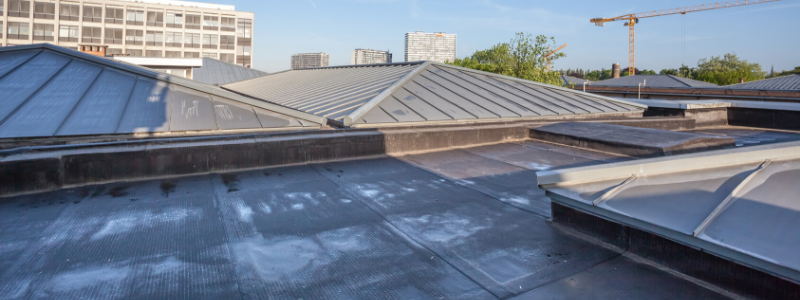
What is roof coating?
A roof coating is an extra layer of protection placed on an already completed roof that can give it a longer lifespan. There are many different types of roof coatings including:
- acrylic
- silicone
- polyurethane
- elastomeric
- asphalt
Each has its benefits and downsides. Depending on the type of building material, there are several selections to consider, but the most popular are those listed above. Also, check out an up-to-date list of the top ten roof coating products listed by MSN here. An experienced roofing expert — like those at B & M Roofing — should be able to give you suggestions or recommendations after the initial inspection. Overall roof coatings for commercial buildings can be extremely beneficial. We’ve listed the top 3 roof coating benefits.
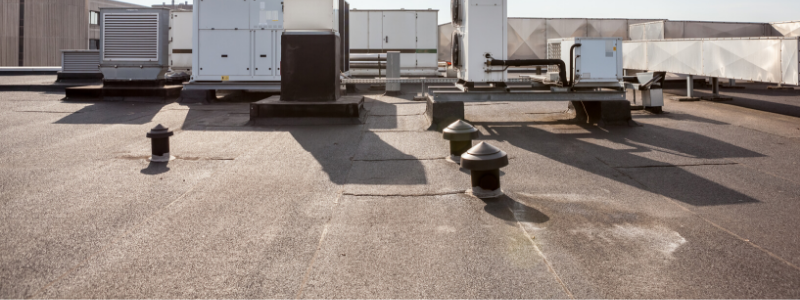
Roof Coating Benefits
Again, there are several benefits of roof coating systems. Commercial property owners usually consider the following roof coating benefits to be of top priority.
As the roofing industry changes, you are likely to see more adaptation in consideration of the rising sustainability practices and eco-friendly building materials.
Consider that to be inherent in most roof coating systems. In addition, you will also find benefits for:
1. Energy Savings
A roof with a white or reflective coating will not absorb the heat from the sun’s rays. Instead, the material serves as a barrier and reflects this transmitted heat. In turn, this provides two major benefits for commercial buildings:
- Keeps the building cooler
- Reduces Energy Consumption
In the summer, this means that the coating will keep your building from warming, thus keeping the building much cooler with drastic differences in temperatures indoors.
What, in turn, does this mean for energy consumption? Well, put simply, the building will not require as much energy use to keep things cool and comfortable. Reducing carbon footprint is a major roof coating benefit that should definitely sway most commercial business managers when considering a coating system. At a minimum it can drastically lower energy bills — and that’s never a bad business move!
2. Protection Against Leaks
Adding a roof coating gives an extra layer of protection from leaks due to physical damage.
If there are already small damaged areas, roof coatings can fill those to protect your roof for the future. Take note that most damaged areas are usually minor. If you’re experiencing extensive damage to your roof either due to inclement weather or age progression, be sure to take a look at underlying factors. In general, we recommend routine maintenance on every roof to ensure quality and extended lifespan. Check out some reasons your commercial roof might leaking here.
However, if the damage is minor, a roof coating can help protect against minor leaks. Sealing up cracks or smaller holes is one of the most noticeable benefits of these services. Also, consider protecting your roof against mold and mildew which can also cause leaks over time.
3. Extended Roof Life
Since one of the main benefits of roof coating is that it can protect your roof from damage, they can also extend the life of your roof. By using a roof coating, your commercial roof will have an additional layer of protection from elements like snow, ice, and hail. In addition, as mentioned above, roof coatings can help seal cracks and holes that lead to leaks and extensive damage. Rather than facing a new roof replacement, roof coatings can provide a secondary option for repairs rather than replacement.
By extending the life of your roof you can wait years before replacing your roof again, leaving money available for other projects.
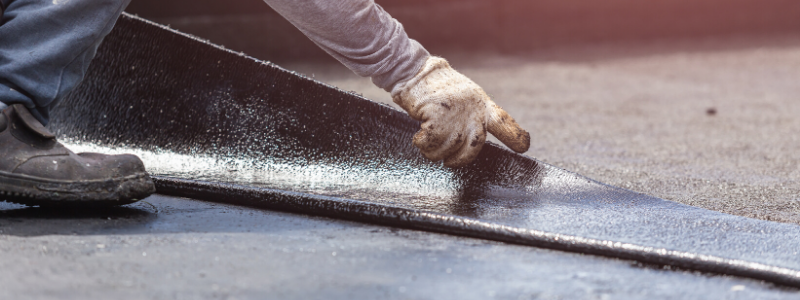
Does Roof Coating Work
We hope we have made it clear by now that the benefits of roof coating are significant enough that it is worth having done on your building. On the other hand, for it to work to its maximum potential, you’ll need to decide which type of roof coating to use.
To learn best how to use roof coating, let’s discuss the pros and cons of popular types:
Benefits of Silicone Roof Coating
Pros:
If you want to keep temperatures low in your building without spending a lot on cooling systems, one of the best things you can do is cover your roof with this material. One of the main benefits of silicone roof coating is that it can reflect a vast amount of the UV rays that are beating down on your building, so it can dramatically change the atmosphere inside.
Silicone roof coatings are also very flexible with regard to temperature, weather, and other factors. It handles hot and cold weather well, and it can withstand pooling water on the surface. To make things even better, it’s quite flexible, so you’re less likely to end up with cracking points over time.
Cons:
Unfortunately, it has a few disadvantages. It attracts dirt and debris, so it needs to be cleaned on a regular basis. Also, it can be slippery when wet, so you have to be extremely careful when walking on it. Finally, the third major downside is that other materials don’t adhere to it very well, so you often have to remove pieces if spraying something else in the same place.
Benefits of Elastomeric Roof Coating
Pros:
This material is similar in many ways to silicone, so it will come as no surprise that one of the primary benefits of elastomeric roof coating is that it can reflect UV rays to keep your building cool. Additionally, it is strong, easy to maintain, and it responds well to having small patches fixed up when necessary.
Cons:
There is one big downside to elastomeric roof coating, however. That is that it doesn’t respond well to pooling water. This doesn’t have to be a deal-breaker, though, because there are steps we can take to prevent ponds from forming on your roof. There are plenty of reasons why that’s not something you want anyway!
Benefits of White Roof Coating
Pros:
Many different coating materials come in white, so this isn’t necessarily a unique type, but we often get asked about the benefits of white roof coating. The color itself is beneficial for the reflection of UV rays, and the potential energy savings that it gives can often help you qualify for green building certifications.
Plus, if you’re roof is visible, and can give your building a clean, attractive, and modern appearance.
Cons:
The biggest downside to white is the fact that it will show dirt and any type of stain more often. Keeping it clean should be a separate issue, but this could potentially be a problem if the roof is visible and could have substances spilled on it.
Benefits of Acrylic Roof Coating
Acrylic is another popular roof coating material because it is easy to install, is cost-effective, and is very reflective.
The two major downsides are that it becomes brittle if there is a lot of ponding on your roof, and it can’t be installed in colder weather – which can add additional challenges to the initial application and any maintenance needed.
Find Out if Roof Coating Would Help You
If you’re looking for a way to extend the life of your commercial roof or protect your roof from leaks, a roof coating might be the best solution for you. You’ll also benefit from energy and cost savings. The roofing experts at B&M Roofing of Colorado are available to answer your commercial roofing questions! Contact us today at 303-443-5843.
Passive Roof Vents
Roof vents are necessary for your home or commercial property. They protect buildings in many ways. Without roof vents, your home or office may be too hot in the summer and too cold in the winter. This makes your heating/cooling system work overtime. There are many different types of roof vents you can use, including passive roof vents.
Inadequate roof ventilation may also result in unhealthy living conditions. When deciding on what kind of roof vents will be best for your property, it is important to know and understand your options.
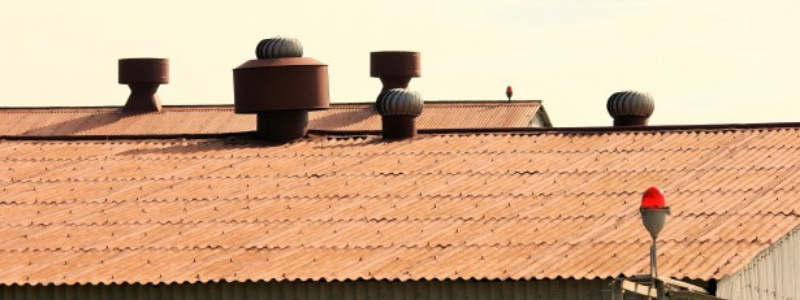
What are Roof Vents?
Roof vents or exhaust vents are installed at the top of the roof. The roof ventilation in your property lets air circulate through the attic of the building. Regulating the air in this space can have many benefits.
Why are Roof Vents Important?
Roof vents are mainly installed to allow heat, hot air, moisture, and odors to escape from your attic. Roof turbines have blades that spin in the breeze. This motion pulls air up through the house into the attic and out through the vents.
Roofing ventilation systems work year-round. They balance the intake of cool air and the outflow of warm air. Roof vents are often located at the peak of your roof because hot air accumulates there.
Roof Vents Year-Round
Combined with attic fans, roof vents can significantly cut the cost of heating and cooling your home. Warm months intensify heated air because outside temperatures rise. If your home is not properly vented, your air conditioner may get overloaded trying to replace warm air with cool. During cooler months, your heating system produced warm aid. This heated air mixes with water vapor from activities like cooking, showers, and bathing. If this warm, moist air lingers in your attic, it can cause mold, mildew, damage to roofing studs, and even ice dams when temperatures drop outdoors.
Roof Vents for Protection
Roof vents can also protect your home from costly structural damage caused by ice dams, moisture buildup, tapped heat and mold, or poor indoor air quality. Poor ventilation can eventually cause shingles to fail, resulting in roof leaks. If this occurs, the structure of your building may be compromised.
Roof vents extend the life of your roof. This can allow for huge savings. Vents also regulate the temperature of your property. Thus, they reduce energy costs. If an attic is well ventilated, it will reduce the chances of rot, mildew, mold, and peeling paint.
Types of Roof Vents
The goal of roof vents is to equalize the inflow of cool air and the outflow of warm air. Multiple types of roof vents used in combination can achieve this effect.
Intake Vents
Intake vents improve exhaust vents’ ability to reduce attic heat. They draw in cooler air from the outside. As the cooler air enters, it forces warmer air to rise and exit.
Intake vents should be evenly distributed along the roof of the house. The most common intake vents include:
- Soffit vents. These are placed on the material under the eaves or between the joists on your roof.
- Ridge vents. These are installed at the peak of a sloped roof. They allow warm, damp air to escape from the attic.
- Gable vents. These are installed in the two gabled ends of your attic. Ideally, they are placed so they take advantage of the prevailing winds. Depending on the wind, gable vents can serve as both intake and exhaust vents.
Exhaust Vents
Exhaust vents are located at the top of the roof. They provide an easy exit for heated air, odors, and moisture to escape from the attic. If this air does not get out, the result can be a buildup of heat and moisture. Besides poor air quality, roof damage and peeling paint may occur.
Common types of exhaust vents include the following.
- Ridge vents run along the top edge of the roof. When the wind blows across their ridges, this results in uniform air movements.
- Roof turbines have blades that spin in the wind. This pulls air through the intake vents. Roof turbines are evenly spaced across the roof.
- Static roof vents are often called roof louvers. These fit into the highest peaks of a roof.
- Gable vents are one type of louvered vent. Depending on wind direction, they may be intake or exhaust vents.
Are Fans Necessary?
Fans on ridge or gable vents help blow hot, humid air out of an attic. Attic ventilation fans are energy-efficient and don’t cost much to operate.
They help cool air and prevent hot air from remaining in your attic while pulling in cool air.
Attic ventilation fans tend to be quite energy-efficient. Many of them are solar-powered and require no additional electrical work.
However, some argue against attic ventilation fans because:
- Attics with good insulation shouldn’t need fans.
- Fans can cause loss of conditioned air if the attic is not airtight.
Why Choose Passive Roof Vents?
Passive roof vents use natural elements like wind to move the air through the attic and out of your home. They do not rely on fans. Thus, they are environmentally friendly.
Most homes have some degree of passive attic venting. Cooler air enters through soffit vents. Air that heats up inside the attic rises and exits through gable vents or ridge vents. Warm air leaving the attic creates negative pressure sucking in cool air.
There are several advantages to using passive roof ventilation:
- You don’t have to buy any fancy equipment.
- Passive roof ventilation is quiet.
- When you do not rely on fans, you reduce your carbon footprint.
- Passive roof vents result in cleaner air.
- Maintenance and replacement costs stay low.
- Passive roof vents produce more consistent heating/cooling of the air in the building.
- Energy bills will be lower.
- Natural ventilation provides more efficient humidity control.
Using the most effective combination of roof vents can improve your home’s livability. Well-selected and maintained roof vents can reduce your energy costs. They can also increase the life of your roof and reduce costly repairs.
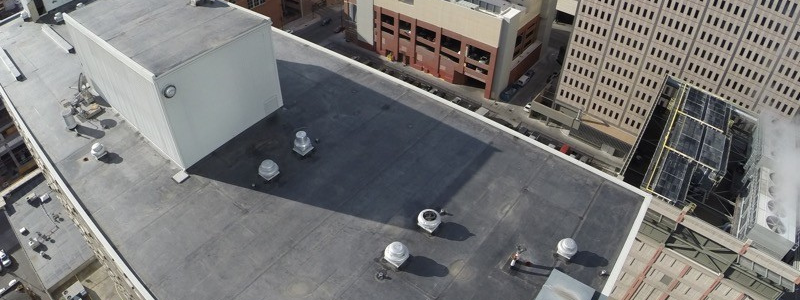
How Can B&M Roofing Help?
It is important that roof vents be installed properly and checked regularly by roofing professionals. Colorado’s many days of sunshine, brisk winters, and high winds create unique weather challenges. B&M Roofing has been installing, inspecting, and repairing roof vents in Colorado since 1947. Our roofing specialists are proud to provide their valued clients with reliable, meticulous service. B&M roofers are experienced, licensed, and insured. We have a guaranteed commitment to excellence. To let us know how we can help you choose the most effective roof vents and placement for your home, contact us today!
Are Gutter Screens Worth It?
Clogged gutters can be a nightmare. They can lead to overflowing, which can then lead to water intrusion, which further leads to extensive, and expensive, water damage within your home. Gutter screens, also called gutter guards, are designed to sit on top of your gutter to prevent debris from falling inside them. This allows for rainwater to pass through freely, as the screens prevent clogs and blockages.
There is a variety of different kinds of gutter screens available on the market. Gutter screens can be made from:
- Vinyl
- PVC
- Steel
- Aluminum
Each type is engineered differently and has its own pros and cons. The most common type of gutter screen is a rounded screen that attaches to shingles on a roof, covering the gutters. The mesh captures debris and prevents it from entering the gutters.
Another type of gutter screen design is made from micro-mesh stainless steel, which allows rainwater to run through small holes while blocking leaves, sticks, and debris from falling in. Other types of gutter screens include surface tension guards, brush guards, and foam guards.
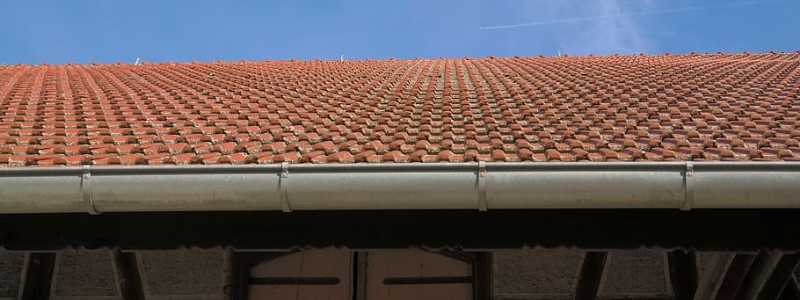
So, you’re probably asking yourself: are gutter screens worth it? The question is more complicated than it seems.
Depending on which type of gutter screen you choose, they can become quite costly. However, they can also significantly reduce gutter maintenance efforts and prevent blockages.
To help answer the question, “Are gutter screens worth it,” we’ve put together some of the benefits and drawbacks of having them installed on your home. Here are some of the pros and cons.
Are Gutter Screens Worth It: Pros
They make gutters easier to clean.
Gutter screens do a very good job at preventing the accumulation of branches, leaves, and shingle granules in your gutters. Therefore, you’ll find yourself having to clean your actual gutters less often. Gutter screens themselves must still be cleaned and maintained to keep them working efficiently. Cleaning gutter screens involves removing accumulated materials off the guards and potentially hosing them down. Gutter screens reduce the time it takes to clean your gutters. They are especially worth it if you have large trees surrounding or near your home.
They reduce ice dam formation.
Since gutter screens direct water away from your home and prevent the accumulation of stagnant water, the chance of ice dams forming inside the gutters is reduced. This is especially true if your gutter screens are heated. Ice can damage your gutter system and can be quite costly to repair. Heated gutter screens might be beneficial if you live in areas with harsh winters with cold temperatures and lots of snow.
They help to prevent animal infestation.
Gutter screens can prevent wildlife such as squirrels, birds, mice, and insects from nesting and breeding in your gutters. This is because they reduce the amount of stagnant water sitting inside your gutters.
Stagnant water attracts vermin and insects which can lead to infestation inside the home if the problem is not handled immediately. Gutter screens also work as a physical barrier for rodents who can navigate their way inside the home.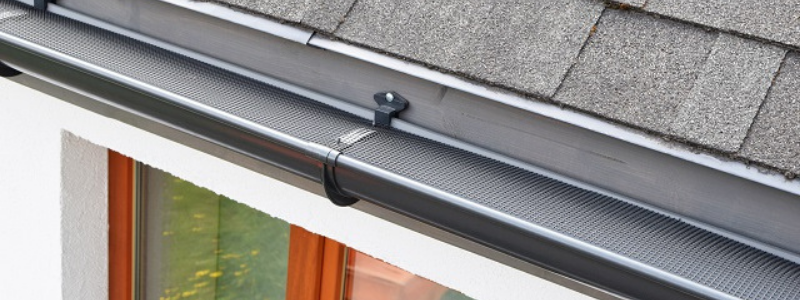
Installation can be easy and inexpensive.
Gutter screens can be easily installed without altering your existing gutter system. These are some of the most affordable gutter guard options. The price of gutter screens usually starts under $1 per linear foot, depending on the material used.
They prevent blockages and clogs.
Because gutter screens reduce the amount of debris that collects inside your gutters, the chances for clogs and blockages are diminished. Blockages and clogs can lead to water damage, erosion, and the formation of rust. It can also lead to water entering the home, causing mold and mildew to grow. Additionally, blockages and clogs that lead to overflowing can result in unattractive water stains on your home’s exterior.
Are Gutter Screens Worth It: Cons
Gutter screens need cleaning, as well.
Yes, it’s true gutter screens remove a huge load of cleaning your gutters manually, but it doesn’t remove the need for maintenance entirely. It is important to clean your gutter screens every so often, if they are left uncleaned, debris can accumulate on the screen and prevent water from passing through the mesh. Additionally, the added weight of debris build-up on your gutter screens can cause your actual gutters to become loose and sag, or even fall off completely.
They might not be effective if not installed properly.
Gutter screens are extremely effective when installed properly. However, poorly installed gutter screens might end up being a waste of your investment. Poorly installed gutter screens can dislodge during intense weather. Make sure you hire a reputable roofing company, such as B&M Roofing, and leave it to the experts. Installing gutter screens yourself can be a dangerous task, and it can result in poor installation and future damages.
They don’t last forever.
Nothing lasts forever, and that’s especially true for gutter screens. Basic gutter screens, such as those made from plastic can last 6 to 8 years depending on the climate you live in and how well you maintain your gutter system. The longevity of gutter screens also depends on how well they are installed and what materials are used. Screens made from metals such as aluminum, copper, and stainless steel will last much longer than screens made from plastic and foam.
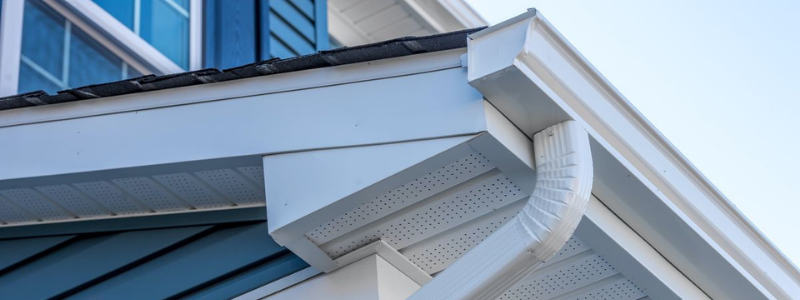
B&M Roofing: Colorado’s Best
Since 1947, B&M Roofing has been proudly serving homes throughout Colorado. Our team of expert roofers can help you decide which gutter system is best for your home and budget using extensive knowledge and best practices. We understand the challenges that roofs face in Colorado’s climate. We know how to restore and protect your roof and gutters to keep your home structurally sound. If you’ve asked yourself, “Are gutter screens worth it,” and your answer is yes, we can certainly help.
When it comes to our reputation, B&M Roofing is known for being fast, efficient, and cost-effective. Whether it’s maintenance, repair, or replacement, our roofing experts will do the job right. Contact us today for a consultation and an initial free estimate. We can provide well-backed suggestions to help you make well-informed decisions about your roof. Call us today!
Hip Roof vs Gable Roof
Whether we’re talking about a commercial or residential roof, there is a wide variety of roofing styles and materials. Some of the most common styles of roofs are hip roofs and gable roofs. But what are the differences? What are the pros and cons? Here we compare and contrast a hip roof vs gable roof.
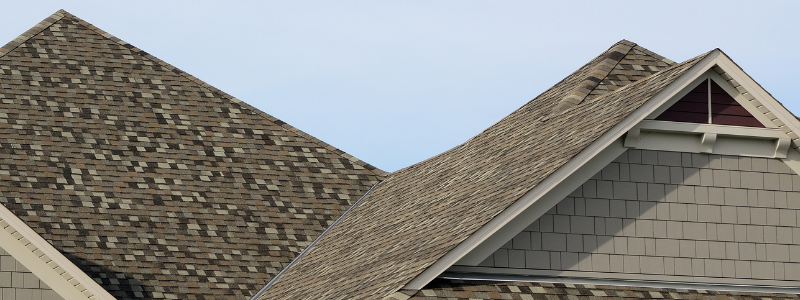
What is a Hip Roof?
A hip roof or hipped roof has all sides slope downwards to the walls. Usually, the pitch is gentle.
Popularity
Hip roofs are a favorite North American roof style. Home and business owners like the hip roof because it has a clean, modern look and it is very durable.
Cost
Hip roofs generally cost more than gable roofs. The design is more complex and uses more materials.
The average cost of a hip roof is between $20,000 and $50,000. Variations depend on the slope, material, pitch, and roof area. Typical costs are between $8 and $12 a square foot.
Advantages of a Hip Roof
When comparing the advantages of a hip roof vs gable roof, hip roofs are more stable than gable roofs. The inward slope of all four sides is what makes it sturdier and more durable. This is a definite advantage in climate extremes. Hip roofs are excellent for both high wind and snowy areas. The slant of the roof allows snow to slide off easily leaving no standing water.
Hip roofs offer the option of extra living space. You can add another story by installing dormers or crow’s nests.
Hip roofs can be built in variations including:
- Simple hip: Also known as a square hip roof, the simple hip is the most common type of hip roof. It has a polygon on two sides and a triangle on two other sides. The sides come together at the top to form a simple ridge.
- Pyramid hip: Also a simple hip roof design, the pyramid hip is so named because it looks like a pyramid. There is a single peak at the top. A common example is a pyramid roof atop a gazebo. This is also called a pavilion roof.
- Cross hipped: Similar to a cross gable roof, this design is often used on homes with different wings. The line where the two roofs meet is called a valley.
- Mansard roof: On a mansard roof, each side of the roof has two slopes with the bottom slope steeper than the top slope.
- Combination roof: This design is similar to the mansard roof except that it flares at the bottom completely around the roof. The lower level of the roof is at a much lower pitch.
- Jerkinhead roof: Also known as a half-hipped roof, this design has two sides shortened.
Downsides to a Hip Roof
Hip roofs are more expensive to build than gable roofs.
The hip roof is a more complex design that requires more building materials and labor. If dormers are added, this creates seams and valleys. These must be carefully sealed and checked or they may pose a problem with rainwater accumulation and leaks.
The flashing on the end walls of the dormers must be properly and securely installed.
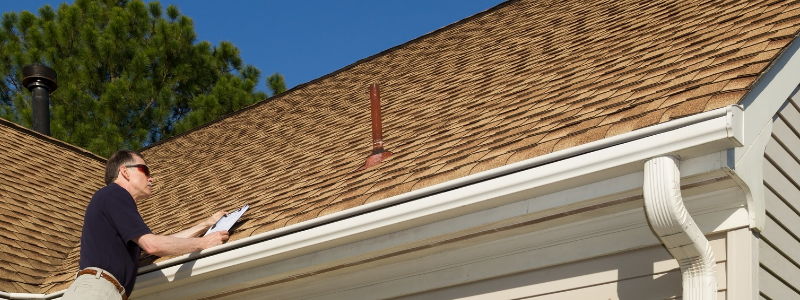
What is a Gable Roof?
The gable roof is shaped like an A. Also known as pitched or peaked roof, the gable roof is characterized by its triangular shape at the end. This is known as a gable.
Popularity
Gable roofs are one of the most popular types in many American communities. They are seen on New England and east coast Canada homes. Famous examples include Nathaniel Hawthorne’s The House of Seven Gables and Lucy Maud Montgomery’s Anne of Green Gables settings.
Cost
The average cost to build a gable porch roof is between $16 and $30 a square foot. If the slope is higher or the home or business has an unusual layout, costs may increase.
Advantages of a Gable Roof
If you live in an area that gets lots of rain or snow, gable roofs are excellent for shedding moisture so leaks do not occur.
The attic or vaulted ceiling space creates better ventilation. This decreases condensation, mold, or mildew.
Gable roof’s simple design makes it less expensive and labor-intensive than many other roof designs.
Gable roofs can be constructed in a variety of designs including:
- Side gable: two equal panels or pitched sides at an angle.
- Crossed gable: two gable roof sections meet at the right angle. Crossed gable is often used in Cape Cod and Tudor houses.
- Front gable roof: at the entrance of the house. This is often used in Colonial style homes.
- Dutch gable: a mix of gable and hip roof. The gable roof sits atop a hip roof.
- Gambrel: This is a gable version of the mansard roof. Gambrel roofs are popular on barns.
- Saltbox: This roof design is found in many colonial-style homes. It features an open gable roof. One end extends farther than the other. This results in an asymmetrical roof. More space is thus created.
Disadvantages of a Gable Roof
If you live in an area where high winds or hurricanes are likely, a gable roof may not be the best choice. Gable roofs must be carefully constructed with good support or the roof may collapse in high winds. Strong winds may also peel roofing materials away from gable roofs. The overhang can also allow winds to create an uplift which will detach the roof from the walls.
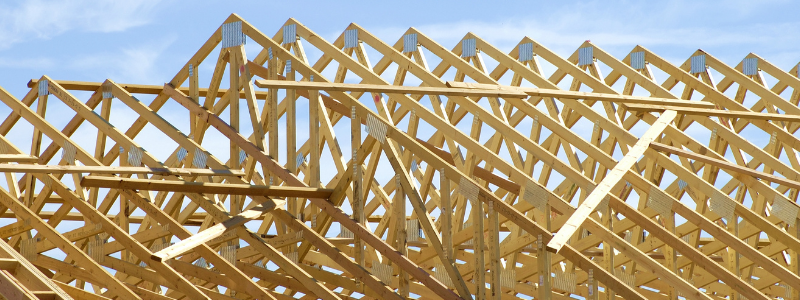
Hip Roof vs Gable Roof
Both types of roofs have pros and cons. In making a decision, consider things like curb appeal, cost, and weather challenges.
A hip roof is slightly more costly than a gable roof. That is because the design requires more roofing materials. The design also means that there is more waste due to cutting for the angles and ridges on a hip roof. However, a hip roof is easier to build than a gable roof so the labor costs will be lower.
If you want to make use of the attic space for extra bedrooms or office space, a hip roof allows you to add dormers.
Gable roofs offer better ventilation. This may result in less condensation and less likelihood of mold or mildew.
Hip roof designs may offer some insurance benefits in some cases.
When it comes to wind performance, the hip roof is superior to the gable roof. However, in snowy areas, the gable roof is steep enough to allow snow to slide off where snow builds up on a hip roof.
Why Choose B & M Roofing?
Regardless of the roof design you choose, regular roof system maintenance is critical to the longevity of your roof. Choosing an experienced roof inspection, repair, and replacement specialist who knows the weather conditions of your area will ensure the health of your roof.
With seventy-five years of successful roof maintenance in Colorado, B & M Roofing has a proud record of meticulous service.
For more information about roof maintenance, repair, and replacement on your Colorado home or business or to inquire about a free estimate, call 303-816-0068 or fill out a contact form.
Flat Roof Maintenance
No matter the type of roof, it requires routine maintenance and checkups to make sure that the roof is doing what it needs to and isn’t compromised. With flat roofs, this is no different. However, flat roof maintenance looks a bit different than that of other types of roofs.
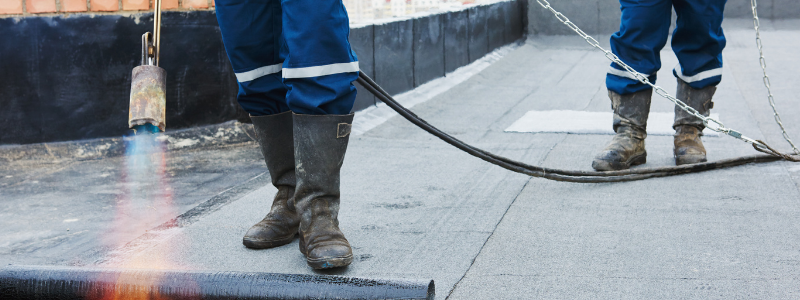
What is a Flat Roof?
A flat roof is, technically, not flat. It is almost level. Its pitch or slope is very low. Flat roofs have up to a ten-degree slope. They need some slope to allow water to drain.
Flat roofs have been around a long time. They were used in ancient times in arid climates. As factories, warehouses, and other large industrial structures began to appear, flat roofs became both practical and economical.
Benefits of a Low-Slope Roof
If you have a large factory, warehouse, or other industry, a flat roof may be required to cover the vast expanse.
Flat roofs give you space. Gardens or rooftop patios have been built on this space. Plants provide food and aesthetics on some flat roofs.
Flat roofs require less material to build. Construction and repair costs are lower because they are faster to erect and repair. Some homeowners or business owners have turned sections of their flat roofs into restaurants, patios, or working gardens. This adds more living or business space.
Flat roof spaces can provide beauty and give your building additional weather protection.
Flat roofs can save money on energy bills. This is especially true in Colorado climates where seasons bring special heat and cold challenges. Sloped roofs may trap heat or allow cooled air to escape. However, a flat roof leaves less space overhead where hot or cold air can collect.
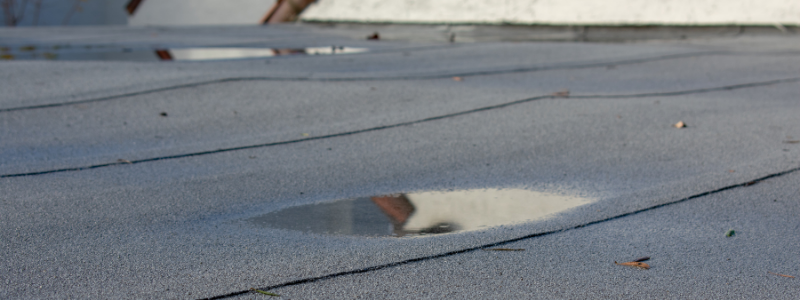
Disadvantages of Flat Roof Construction
The news about flat roofs is not all good. They are unreliable in Colorado winter weather. In colder temperatures, water will collect on flat roofs. This can result in an accumulation of ice or snow. You may need to consider weatherproofing options.
Flat roofs pose a greater chance of earlier replacement. Where sloped roofs, with proper inspection and maintenance, can be expected to last twenty years or more years, flat roofs often require replacement every ten years. The National Roofing Contractors Association notes that that business and homeowners often opt for roofs with a greater pitch because of the increased cost of more frequent repair and replacement of flat roofs.
Turning a flat roof into a patio or garden has appeal for those who are trying to be eco-friendly. However, there is an extra weight involved. Plants can also penetrate the roof, creating cracks, leaks, or mold issues.
Flat Roof Maintenance Tips
If you have decided that a flat roof on your home or business is appealing, there are specific maintenance steps you need to take:
Perform Regular Inspection
All roofs should be inspected once or twice a year. However, flat roofs should be inspected every two or three months. Roof inspection specialists will make sure everything is intact.
You can do some of these monthly inspections yourself since flat roofs are easy to walk on. However, a professional roof inspection specialist should do a formal inspection at least twice a year. What are you looking for?
Check for things like:
- Blisters in the roof surface
- Holes in the roof surface
- Loose seams
- Soft spots
- Signs of rust
- Cracks in the surface or seams
- Water pooling
- Ice or snow buildup
- Signs that the drainage system for water is clogged
- Leaks or cracks in seams
- Gutters clogged with debris
If any of these occurs, it is time to call us. We provide free estimates.
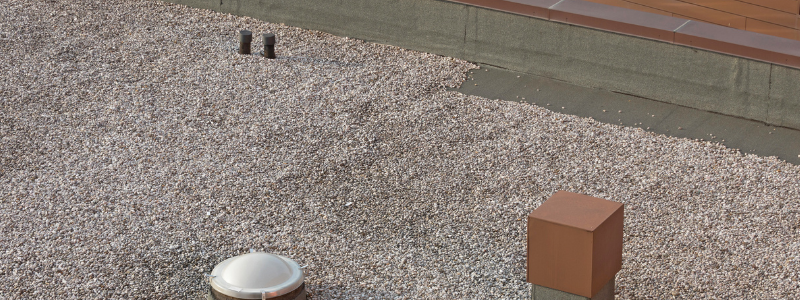
Keep Roof Clear
Because of their low pitch, flat roofs collect debris, leaves, twigs, and dirt. Debris is unsightly. However, more importantly, it leads to moisture retention. This compromises your roof’s lifespan and can lead to an accumulation of algae, bacteria, and mold.
Keep Shrubs and Trees Cut Back from the Roof
Overhanging shrubs and trees aren’t healthy for any roof but they are particularly troublesome for flat roofs. Overhanging plants lead to more debris and thus the need to clean off the roof more frequently. Falling limbs can also damage the roof. Moss from nearby trees can accumulate on the roof. Once there, it will begin to grow. It is unsightly but also not good for the health of your roof.
Ensure Proper Drainage
Because of their lack of pitch, flat roofs accumulate water, ice, and snow. Pooling water indicates poor drainage. Have a roof inspector check to make sure your drainage system isn’t clogged. Cleaning of the drainage system should be part of regular inspection.
Check for Stress Points
Flat roofs may buckle or sag, or crack because of too much weight. This could be from water, ice, snow, debris, or heavy roof cleaning equipment.
Repair Leaks Immediately
All roofs may develop leaks. Flat roofs accumulate water faster so they are predisposed to leaking. If you notice a leak, call a roofing repair specialist immediately. He will assess the situation and make needed repairs before water has a chance to accumulate in walls or ceilings.
Avoid Weight Buildup
Water, ice, snow, debris, can all add weight. This puts stress on your flat roof. It can cause cracks, flat spots, or sagging. It can even cause roof collapse. To avoid undue weight, remove ice, snow, or debris.
Be Vigilant
The number one reason for issues with flat roofs is negligence. Small blister, crack, leaks, puddles, or soft spots can quickly become costly problems if ignored.
Plan for Replacement
Most flat roofs—no matter how well cared for—have a lifespan of between ten and twenty years. If repairs become frequent, it may be time to replace that roof.
Acknowledge Colorado Challenges
Colorado weather presents roofing challenges. Altitude affects materials. In Colorado’s air pressure, solar radiation, density, oxygen, temperature, and atmospheric water vapor change. This causes extra stress on a flat roof.
Colorado snow and ice accumulation can cause lumps of ice form to form at the edge of the flat roof in winter. Warm days and freezing nights invite the formation of an ice dam. Melting snow is then blocked from draining. Roof leaks and water dripping into your home or business will follow.
Colorado has three hundred days of sunshine. Constant heat will cause a flat roof to blister or crack. Heat and UV radiation wear down many roofing materials.
B&M Roofing – Experts in Flat Roof Repair & Replacement
Because Colorado’s climate presents roofing challenges, it is wise to choose a roofing specialist who understands what roofing materials will withstand the climate.
B & M Roofing is a Colorado-owned company with seventy years of successful service. We have a reputation for being fast, efficient, and economical. When it comes to flat roof maintenance, repair, and replacement, our roofing specialists know what they are doing.
B & M Roofing provides meticulous service to thousands of Colorado homes and businesses each year. They are licensed and insured roofing specialists committed to excellence.
Each roof inspection and repair receives the knowledge, experience, and expertise of a local team, dedicated to roofing repair and replacement.
Metal Roof Fading
If you have a metal roof or are considering getting one, you should be prepared for it to fade and chalk over time. However, this is just one thing to be aware of when deciding whether to use a metal roof or not. This article will take you through some of the benefits of using metal roofs, what metal roof chalking and fading actually is as well as how to prevent it, and what the best colors may be for a metal roof.
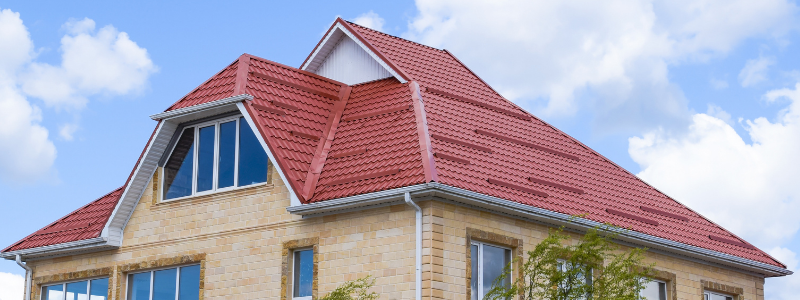
Why Use Metal Roofing?
There are many reasons why somebody might choose to go with a metal roof.
They are extremely durable and long-lasting, especially when compared to other traditional roof materials such as asphalt.
You also have the ability to customize the color of your metal roof’s paint, as they can be painted black, red, green, pink, or anything you’d want. In comparison, most asphalt roofs are very limited in their color options.
In addition, metal roofs are also very energy efficient: A basic, unpainted metal roof is estimated to save a traditional home up to 40% in energy costs. Metal roofs reflect sunlight, and therefore, can help keep buildings cool in the summer without the excessive use of air conditioning. They also provide excellent insulation in the winter.
Sustainability is another reason why people may choose to use metal roofing. Since metal is an easily recyclable material, many metal roofs these days are sourced from recycled metal. Additionally, since metal is an extremely durable material, you will need to replace it less often than you would with other roof materials, thereby reducing the total waste your home or business produces.
Lastly, you may want to use metal roofing simply because it looks cool! Metal can give a home or office a sleek, unique look that will set it apart from other buildings in the area.
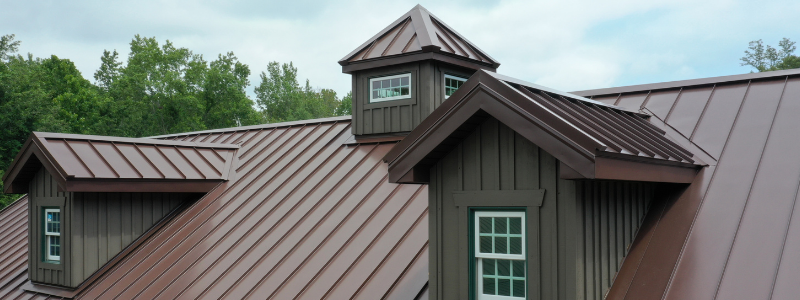
How Long do Metal Roofs Last?
With proper care, metal roofs are expected to last anywhere from 40 to 70 years.
In comparison, asphalt normally only lasts between 12 and 20 years, and wood shingles will last, at an absolute maximum, about 45 years.
Metal roofs are the most durable and long-lasting roof materials currently being used today.
Because metal roofs are so long-lasting, they will be significantly cheaper in the long run. Currently, metal roofs cost about twice as much as asphalt roofs, however, when you factor in that metal roofs will last up to 5x as long as asphalt, it’s clear that they give you much a better bang for your buck.
Metal roofs will often last longer, especially with proper maintenance. If you believe your roof is in need of service or repair, the roofing experts at B&M Roofing will happily come to give you a free estimate.
What is Metal Roof Fading?
Over time, environmental elements such as sun, rain, snow, and pollution will interact with and deteriorate a metal roof’s paint pigments.
A common misconception people have is that metal roof fading is causing damage to the roof, which is not true.
Metal roof fading is a natural process, as overtime, any paint color will fade with exposure to harsh elements.
However, although fading in and of itself isn’t damage to a roof, if it is not addressed, this can shorten your roof’s lifespan.
Paint protects the actual metal, and when the paint is worn down, the metal roof itself will wear down faster. This is one reason why you will want to make sure you are using high-quality paint for your metal roof.
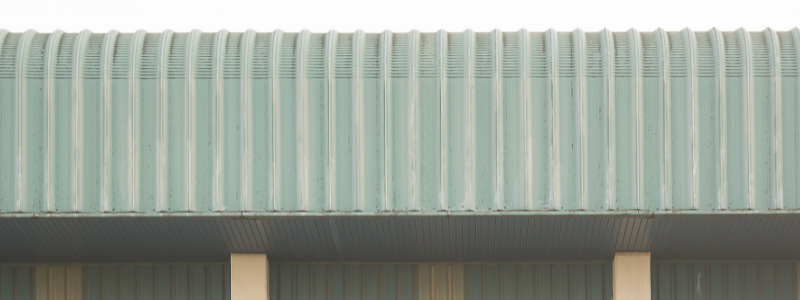
What is Metal Roof Chalking?
Metal roof chalking is the formation of whitish residue on painted or coated metal.
Unfortunately, this whitish residue is not actually true chalk- if it were, you’d definitely see a lot more roof repair companies dabbling in producing sidewalk chalk.
Metal roof chalking occurs through a similar process as metal roof fading.
As the paint or resin on your metal roof wears down, it will turn white and chalky, hence the name.
Once again, metal roof chalking isn’t indicative of damage being done to the roof.
But, since paint and resin are protecting the actual metal, unaddressed chalking can shorten a metal roof’s lifespan.
What Colors are Best for Metal Roofs?
The most important thing when selecting what color to paint your metal roof is to ensure that a high-quality metal paint is used.
If you’re overly concerned about chalking and fading, lighter, inorganic paint colors will chalk and fade slower, plus it will be less apparent when they do.
For example, it will be really difficult to see a light grey fade when compared to vibrant red color. Additionally, different paint colors can have different benefits- for example, a lighter roof will reflect more heat than a roof painted black, and therefore keep your home cooler in the summer.
Ultimately, chalking and fading are just one factor you should consider when making a decision about what color to paint your metal roof.
If you really strongly want a darker, or more uniquely colored roof, choose that color, and just make sure that you’re using high-quality paint.
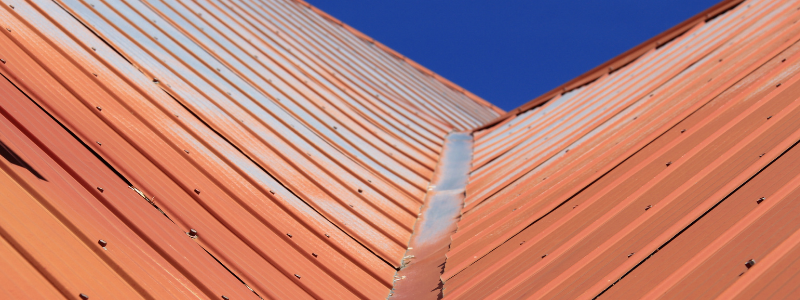
How to Prevent Metal Roof Chalking and Fading
Chalking and fading is a natural process, but there are specific steps that you can take to delay and mitigate their effects.
Lighter, inorganic paint colors will chalk and fade slower, and it will be less apparent when they do. In addition, choosing high-quality metal paints can, and will make a gigantic difference when it comes to protecting your roof.
You can also do the best you can to avoid exposure to certain elements, such as sunlight, moisture, and pollution. For example, roofs that face north are exposed to significantly less direct sunlight than roofs that face south.
However, roofs are obviously meant to provide you with protection from elements!
Finally, a great step to take is to purchase a roof warranty and ensure that the warranty you purchase covers chalking and fading.
Roof chalking and fading is a natural process that will happen over time, but a proper warranty will address chalking and fading. This will help protect your metal roof’s lifespan while keeping your roof looking the way it’s supposed to.
If you’re interested in installing a new roof for your home or business, look no further than B&M Roofing.
We are true experts in roofs, having skillfully provided reliable roof coverings since 1947. We can give you a free estimate, & will work with you every step of the way, from determining which roof (metal or not) is best for you, installing your new roof, and providing regular maintenance.
Folded Plate Roof
Most commonly found on commercial and industrial buildings as well as mid-century modern homes, a folded plate roof is quite beneficial and useful.
Here’s all you need to know:
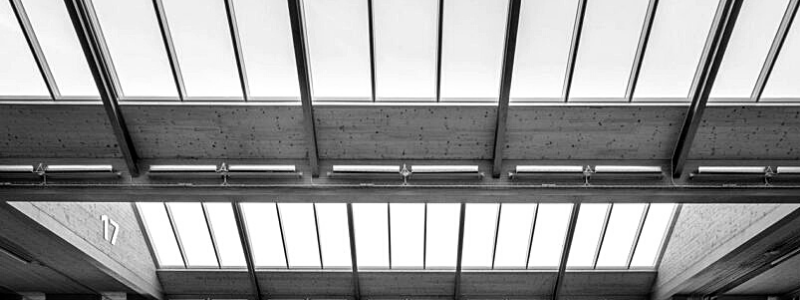
What is a Folded Plate Roof?
Folded plate roofs can be recognized as a set of flat tiles or plates. The materials are rigidly connected, inclined in different directions, while joined along their edges at the top.
What Does a Folded Plate Roof Look Like?
Modern folded plate structures are usually constructed on-site or precast of reinforced concrete, tempered glass, or steel plate. Their shapes can vary from prisms, rectangles, pyramids, to nonrectangular shapes.
Folded plate structure follows nature’s lead. You can see it in broadleaf-tree leaves, flower petals, and foldable insect wings like those of the Palm Leaf Beetle.
Origins of the Folded Plate Roof
Folded plate roofs first appeared in Germany during the 1920s. Folded plate roof construction began with immense factory buildings. These roof types were common on coal bunkers.
In 1923, Engineer Eudene Freyssinet used the first roof with the folded plate structure to build an aircraft hangar at Orly Airport in Paris, France.
Folded plate construction in central Europe was introduced to North America right after the Second World War. It quickly became popular. It was a highly accepted new form of construction for its feasibility of erection. Since then, folded plate structure’s performance and its structural clarity of analysis and design have made it a perennial choice throughout the world.
Folded plate roof technology was first employed in North America during the 1930s. It was used then mainly in the construction of warehouses.
For those who were building very large industrial structures and commercial buildings, folded plate roof construction became the preferred roofing solution.
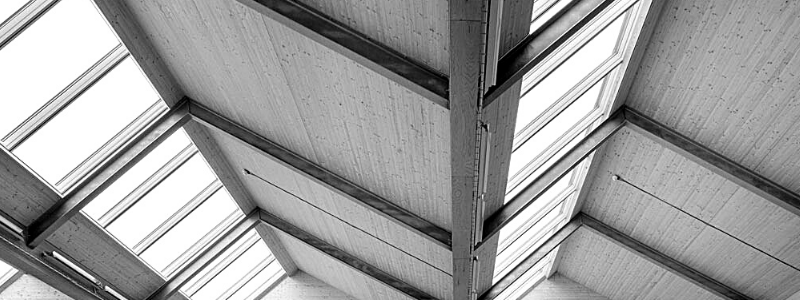
Where Are They Most Prevalent?
Folded plate roof technology has been used throughout the world. It is most prevalent where there is a concentration of large factories, warehouses, and industrial buildings.
Several have become famous examples of folded plate roof technology.
In Germany, the Auditorium Maximum der Ruhr-Universität Bochum is an example of folded cement plate technology.
The DCM Pavilion in New Delhi, India was built in 1972. This popular exhibition hall uses steel folded plate technology.
As its name suggests, Mülimatt Sports Education Center in Switzerland is a functional structure for sporting events and sports training.
It was built to address the country’s need for sports facilities. When completed in 2005, the building held two sports halls and a footbridge across the River Aar. The bridge liked the halls with outdoor sporting amenities. The structure is built of precast concrete which allows a minimal outer skin. The entry does not have internal columns. The fifty-five-meter-wide complex gives an airy, sculptured feeling.
India’s Tagore Memorial Theater or Tagore Hall provides a facility for large capacity performances. The facility has a stage and auditorium in a contemporary folded plate structure.
Built in 2017, Switzerland’s Namics Corporate Headquarters at St. Gallen has an unusual floor structure. The building’s design uses six V-shaped lightweight concrete waves only 15 cm thick at mid-span. The sixty-six-foot-high roof is bounded by a post-tensioning system and ribs that correspond to the crests and troughs of the waves.
Germany’s Rostock-Evershagen Supermarket, built in 1973, is an example of folded plate architecture used for such functional buildings as shopping malls and grocery stores. The reinforced concrete folded plate roof in such buildings provides open space for optimum display and shopping.
The Sadar Vallabhbhai Patel Stadium, built in 1950, is located in the Navrangpura. This Indian sports complex hosted the first international cricket match.
Why is the Folded Plate Roof Growing in Popularity?
Folded plate roof technology allows materials to be prefabricated and pre-stressed. The design uses available materials such as glass, steel, and concrete to create large buildings that are both secure and filled with open usable space. Both materials and labor are lower in cost because of the design.
Folded plate roofs are easy for architects to design but also offer many design options. The buildings are aesthetically pleasing yet highly functional.
Folded plate roof technology offers rigid structures that will withstand the most challenging weather conditions. Because the design builds in extraordinary weight-bearing capacity, folded roof technology is ideal for large buildings like warehouses, factories, stadiums, museums, and supermarkets.
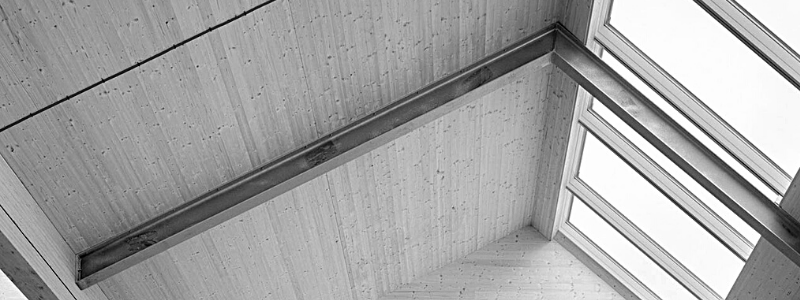
Advantages of the Folded Plate Roof
Folded plate roofs are chosen because they have a high weight-bearing capacity. Folded plate roofs are also very durable. They have extraordinary weight-bearing capacity. This is especially helpful in Colorado’s climate where there is a lot of heavy snow accumulation.
Folded plate construction requires fewer materials than other roofing types in business and commerce. This makes them a cost-effective choice.
Folded plate roofs are also faster and easier to assemble. This reduces labor costs.
These roofs can be constructed in many shapes and forms. Aesthetically, folded plate roofs are pleasing because they can take several, attractive forms.
Folded plate roofs are easy to incorporate into architectural designs.
Disadvantages of the Folded Plate Roof
There are some disadvantages. The construction of a folded plate roof requires great accuracy. Shuttering is difficult. The rise of the roof may also pose some difficulty. This roof construction demands excellent labor and close supervision of the job.
Although the basic folded plate roof construction is both rational and logical enough, there is a need for s numerical computation which can be tedious.
Why Choose B&M Roofing?
With Colorado’s sometimes challenging weather conditions, it pays to have a Colorado roofing company that understands Colorado’s unique roofing needs and concerns.
B&M Roofing offers licensed, bonded, and insured roofing experts. We are committed to restoring your roof, gutters, downspouts, windows, doors, and siding to their original state.
B&M Roofing has been providing quality roofing and repair for all types of roof styles to Colorado businesses and homeowners for nearly seventy-five years.
Knowledgeable, committed roofing specialists are proud to offer our valued customers fast, efficient, on-time and within budget residential, commercial, and industrial roofing projects.
We offer experience and informed advice on every type of roof. Our company is committed to outstanding job performance. We ensure that our clients are completely informed about current roofing products, solutions, and regulations. We are pleased to assist our customers in their roofing needs and decision-making.
To arrange for a free estimate or to get answers to any roofing questions and concerns, give us a call at 303-443-5843.
